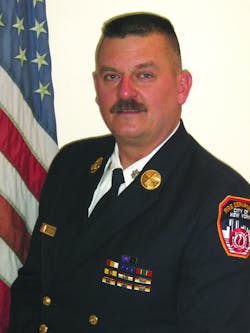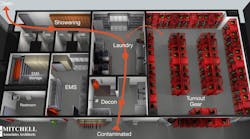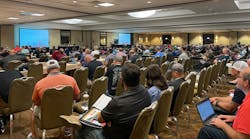Have you ever heard an officer use the words “nothing showing” in the initial report after arriving at an alarm location? I often wonder exactly what those words mean to the other firefighters responding to that location.
Does it mean there is no condition to deal with? Does it mean you can slow down your response? Does it mean the unit on scene will handle this call alone and other responding units can return to their quarters?
I’ll tell you what it really means – nothing! That is correct, “nothing showing” stated on the radio means nothing. Let’s look at some of the not-so-desirable results that can occur when this phrase is used in a radio report.
The first negative effect of stating “nothing showing” is that officers start to believe their own words and they may really think nothing is happening or needs their attention. And what is the next negative effect of this mindset? Often, the crew will get off the apparatus not fully geared up and ready to go to work. An engine crew responds at 11 P.M. to a reported building fire and sees nothing upon arrival. They were all pumped up, geared up and ready for action until they rounded the corner and saw nothing. Now, even though they may climb down from the rig wearing their personal protective equipment (PPE), they may not don their self-contained breathing apparatus (SCBA), pull on their gloves or fasten their chinstraps. The reason this occurs, and it is invalid and incorrect, is that they now assume that when nothing is showing nothing is happening.
The second reason using the radio report “nothing showing” is not productive relates to the other responding units. When an alarm is transmitted, there are often several units responding, sometimes from different firehouses. In career departments, there is often a first- and second-due engine and/or ladder company. These units know their response assignment, and while enroute they are probably mentally preparing for their arrival and tactical assignments. The moment this crew hears the first-to-arrive unit report “nothing showing” they may start to relax. Rather than thinking about what type of building the call involves or how they may have to get to their assigned location in the building, they may start to think that this is going to be a false alarm or minor situation that they are not even going to arrive at. The officer and engineer in the front seat may begin to treat this response as if it were over even before they arrive.
In volunteer departments, the first-arriving engine officer reporting “nothing showing” at the alarm location may cause the firefighters who are still assembling in the firehouse to slow down and maybe wait in quarters with the next apparatus to see if they are really needed. The bottom line here is that when firefighters hear “nothing showing,” they start to think “nothing happening.”
Now the real problem here is that when a fire company arrives at the scene of an alarm and finds “nothing showing,” it may not be an accurate picture of what is actually going on. When there is no visible condition in front of the building upon arrival, that has no bearing on the possibility of the reported condition existing somewhere within the building. I have arrived at a building where a smoke condition was reported and there was no visible smoke at the address. Additionally, there was no person waiting or pointing or otherwise indicating there was a problem. I did not report “nothing showing,” but instead reported my arrival at the alarm location and entered the building with my crew, fully geared up, wearing SCBA and carrying their assigned tools. We weren’t in that building for more than a minute when one of my men discovered the smoke condition, which upon further investigation revealed a basement fire. Yes, a basement fire with “nothing showing” out front.
Not every fire department uses the radio report “nothing showing,” but many still do. Using the term is not in and of itself incorrect, but it does often does have ineffective and unproductive effects. Many fire departments use initial radio reports to transmit the address, type of building or the fire and smoke conditions. All of those pieces of information are useful to the initial crew and the incident commander at some point in the operation. Using the term “nothing showing” simply stated can only have negative effects on the operation. It may cause the first-arriving crew to enter the building not properly or completely equipped, or it can cause the later-arriving units to unnecessarily slow their response or lose their focus on the potential emergency situation they are responding to. Remember, “nothing showing” means nothing!
Chief Salka takes a candid look at news and events impacting the fire service in his blog “The Fire Scene” at http://www.firehouse.com/blogs/the-fire-scene.






